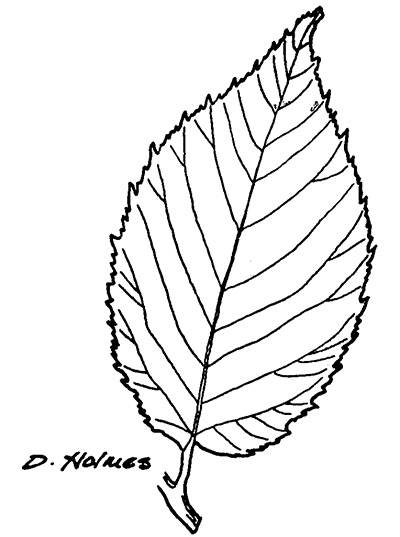Intro to Trees of Indiana: Ironwood
The classic and trusted book "Fifty Common Trees of Indiana" by T.E. Shaw was published in 1956 as a user-friendly guide to local species. Nearly 70 years later, the publication has been updated through a joint effort by the Purdue Department of Forestry and Natural Resources, Indiana 4-H, and the Indiana Department of Natural Resources, and reintroduced as "An Introduction to Trees of Indiana."
A printed copy of the full publication is available for purchase for $7 in the Purdue Extension Education Store. The field guide helps identify common Indiana woodlot trees.
Each week, the Intro to Trees of Indiana web series will offer a sneak peek at one species from the book, paired with an ID That Tree video from Purdue Extension forester Lenny Farlee to help visualize each species as it stands in the woods. Threats to species health as well as also insight into the wood provided by the species, will be provided through additional resources as well as the Hardwoods of the Central Midwest exhibit of the Purdue Arboretum, if available. 
This week, we introduce the ironwood or Ostrya virginiana.
This tree, also known as Eastern hop hornbeam, is identifiable by its oblong leaves with doubly-toothed margins, which are held alternately on very fine twigs, and its fruit, a loosely formed green pod at the tip of the branches, which resembles hops. The bark is medium to dark brown with flakes and prominent flaky ridges which develop as the tree ages. The leaves of ironwood produce vibrant yellow fall color.
The ironwood, typically an understory species but sometimes found as a landscape tree, is closely related to the American Hornbeam or blue beech or musclewood, although the bark of the latter is gray and appears stretched across the muscles and sinews of the tree.
According to the Wood Database, the shade tolerant eastern hop hornbeam grows to between 40 and 60 feet tall.
feet tall.
The wood, which turns, glues and finishes well, is seldom harvested commercially because of its size. It is commonly used to make furniture, canes, tool handles and other turned objects. The name ironwood is given to symbolize the wood’s toughness and resistance to wear and abrasion.
According to the Morton Arboretum, the eastern hop hornbeam is native to the Midwest and the southeastern United States.
Other Resources:
Purdue Plant Doctor
Native Trees of the Midwest, The Education Store
Shrubs and Woody Vines of Indiana and the Midwest, The Education Store
Investing in Indiana Woodlands, The Education Store
Forest Improvement Handbook, The Education Store
ID That Tree, Purdue Extension-Forestry & Natural Resources (FNR) YouTube playlist
Woodland Management Moment , Purdue Extension-FNR YouTube playlist






